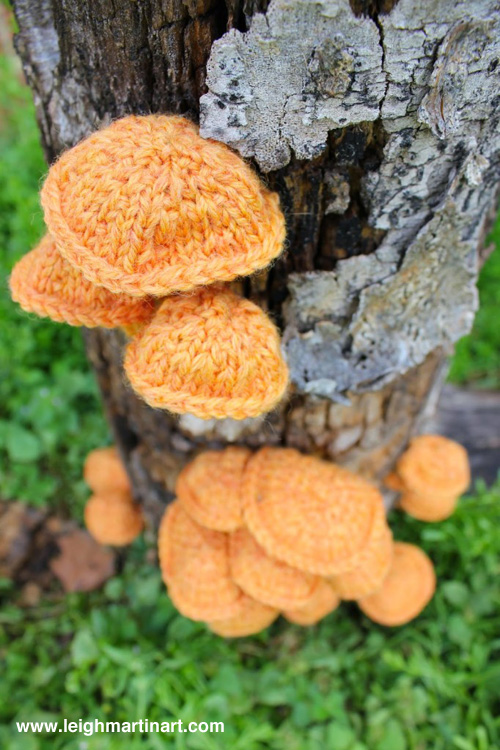I love polypores. Mushrooms are cute, but there's just something fascinating to me about finding a tree with a ladder of conks growing up the trunk. They pose a challenge to knit, mostly due to the shape and attachment element, but the colors are especially pleasing to the eye when I get to work on them. Knit Picks Palette really has become a favorite yarn of mine, simply because of the fact that with 150 shades to choose from it's pretty easy to create that fade from light to dark when necessary. I have a giant basket full of probably about 1/3 of the colors they offer - HA!
Anyway, what we have here is resinous polypore, created as part of my Succession installation for START Norman (on display for another week!). The fruiting structures of this species are rather fleshy - I've seen them on trees before and remember the sponginess when poked. They typically grow on very rotted wood - fallen logs, dead wood, old stumps, etc.


